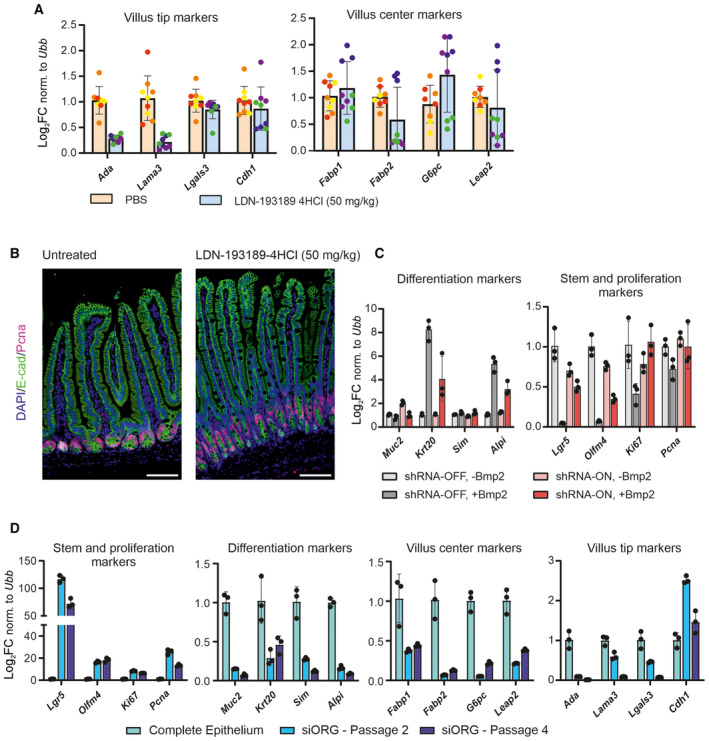Figure EV5. Blocking Bmp receptor type I represses the expression of villus tip genes, Bmp2‐induced differentiation is mediated through Smad4, and long‐term cultivation of intestinal organoids results in reduced differentiation state, but enhances stem cell/proliferating state.

- Four‐day treatment with LDN‐193189‐4HCl (50 mg/kg) inhibitor does not significantly affect the expression of the villus centre genes but it decreases the expression of villus tip genes. (qRT–PCR, expression levels normalized to ubiquitin B (Ubb), n = 3 animals in each condition, error bars show SD and untreated parallel set as 1).
- The epithelial morphology and active proliferation after the 4 days of treatment with LDN‐193189‐4HCl (50 mg/kg) inhibitor. Immunofluorescence, E‐cadherin (green) marks epithelial cells, Pcna (red) stains proliferating cells and DAPI (blue) counterstains nuclei. (Scale bar, 200 μm).
- Smad4 knockdown (shRNA‐ON) alleviates Bmp2‐induced differentiation marked by relative expression of differentiation markers (Muc2, Krt20, Sim and Alpi) and restores the expression of stem cell and proliferation genes (Lgr5, Olfm4, Ki67 and Pcna). (qRT–PCR, expression levels normalized to ubiquitin B (Ubb), n = 3, error bars show SD, untreated parallel set as 1 and treatment as in Fig 6A–C).
- qRT–PCR for indicated genes in complete intestinal epithelium and intestinal organoids cultivated in standard medium after passage 2 (circa 2 weeks after the isolation), respectively, passage 4 (circa 4 weeks after the isolation). (Expression levels normalized to Ubiquitin B (Ubb), n = 3, untreated parallel set as 1, error bars show SD).
